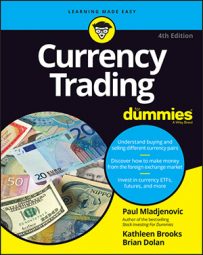Medium- and longer-term trade strategies typically benefit from averaging into a position. Averaging into a position refers to the practice of buying/selling at successively lower/higher prices to improve the average rate of the desired long/short position.
The idea here is to allow larger market swings to unfold and use them to establish a larger position at better prices than current levels in anticipation that the market will eventually reverse course in line with your strategy.
Take a look at a detailed example of averaging into a position to see how it works. Imagine that the USD/JPY is moving lower from 82.20 on a weak U.S. economic release, but you think USD/JPY is unlikely to decline below 81.00, where the 200-day moving average is located.
One possible strategy would be to buy USD/JPY on the current weakness, spacing your buys so that you can buy as low as possible, but above 81.00 where you don’t expect it to trade. (The stop-loss exit in this example would be somewhere below 81.00.)
Imagine that you buy one lot of USD/JPY at the market, now at 82.00, just so you have some piece of the position in case the market rebounds abruptly. You decide that 81.20 is another good level to buy at because it’s a margin of error above the key 81.00 level. If your order to buy at 81.20 is filled, you’ll be long two lots at an average price of 81.60 ([82.00 + 81.20] / 2 = 81.60).
Take a look at what just happened there. To begin with, you were long one lot from 82.00. To add to the position at 81.20 means the market was trading lower, which also means you were looking at an unrealized loss of −80 pips on your initial position from 82.00.
After you buy the second lot, your unrealized loss has not changed substantially (assuming that the market is still at 81.20 and excluding the spread, you’re still out −80 pips, now −40 pips on 2 lots), but your position size has just doubled, which means your risk has also just doubled.
If the market rebounds from 81.20, your unrealized loss will be reduced. But if the market continues to decline, your losses are going to be twice what they were had you not added on to your position. If your strategy plays out and the market reverses higher, you now have a larger position from a better entry price than if you had entered the two lot position earlier at higher levels.
The practice is referred to as pyramiding, and the advice is usually to avoid doing it (as in “Don’t pyramid into a losing position”). Sometimes “adding on” to winning positions is acceptable, such as after a technical level breaks in the direction of your trade.
The result of adding on to winning positions, however, is a worse average rate for the overall position — a higher average long price or a lower average short price. If the market reverses after you add on, any gains in the overall trade can be quickly erased.
So what’s the deal? Should you average into positions or not? As with most questions on trading tactics, the answer is a straightforward “It depends.” Before deciding whether to average into positions, consider the following:
Time frame of the trade: Short-term trades seek to exploit the immediate direction of the market. If you’re wrong on the direction in the first place, adding to the position at better rates will likely only compound your losses. For medium- and longer-term trades, averaging into a position can make sense if the trade setup anticipates a market reversal.
Account size: Depending on your account size, you may not have the capability to add to positions. You also need to keep in mind that adding to a position will further reduce your available margin, which reduces your cushion against adverse price movements, bringing you closer to liquidation due to insufficient margin. If that means trading smaller position sizes, such as 10,000 mini-lots, go with that.
Volatility: If the overall market or the currency pair you’re trading is experiencing heightened volatility, averaging into trades is probably not a good idea. Increased volatility is usually symptomatic of uncertainty or fresh news hitting the market, both of which are prone to see more extreme directional price moves, in which case averaging is a losing proposition. In contrast, lower volatility conditions tend to favor range-trading environments, where averaging can be successful.

